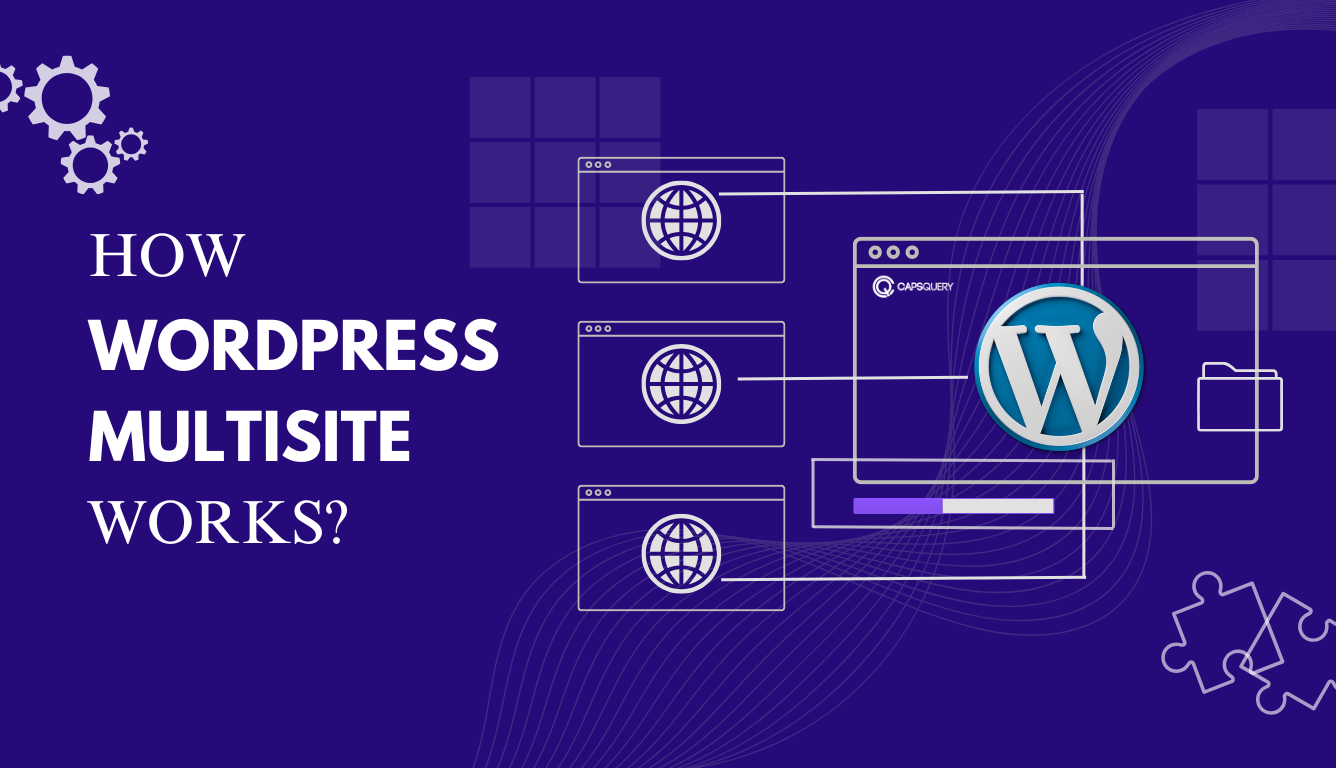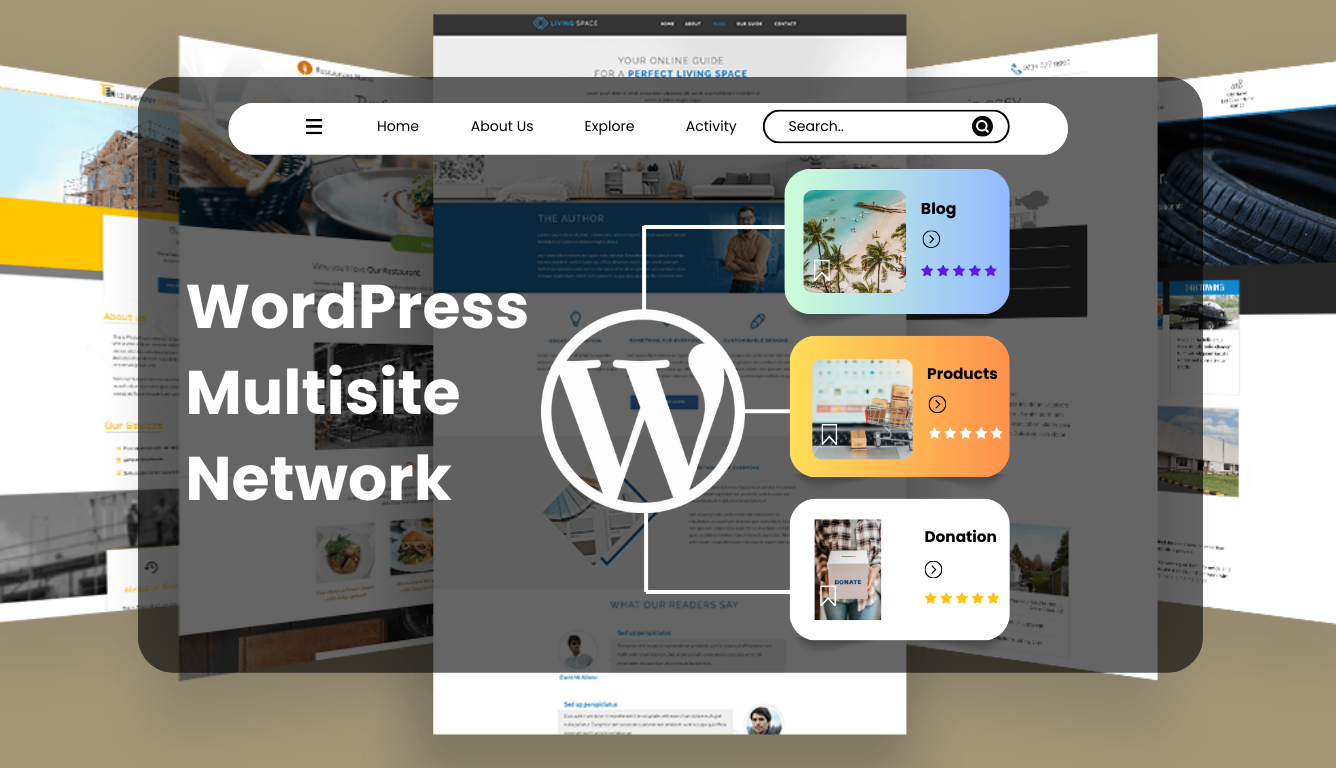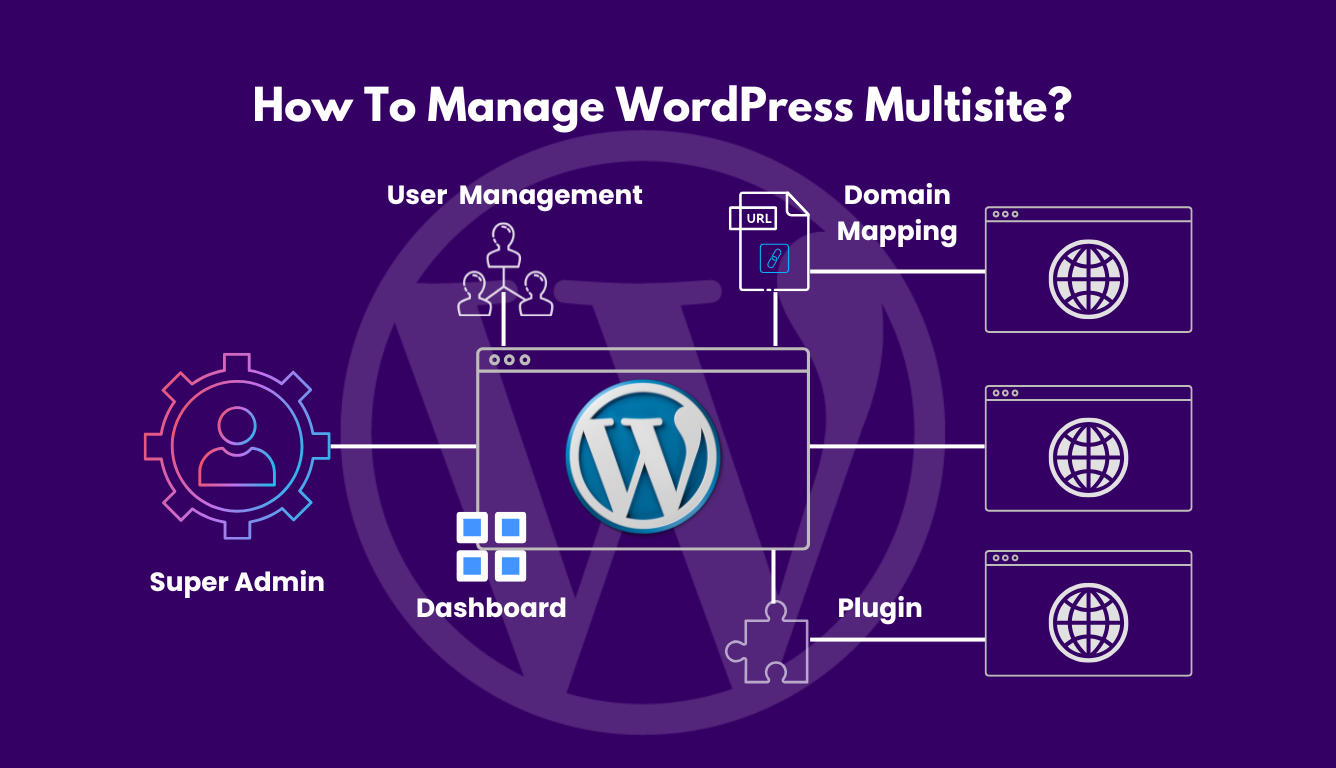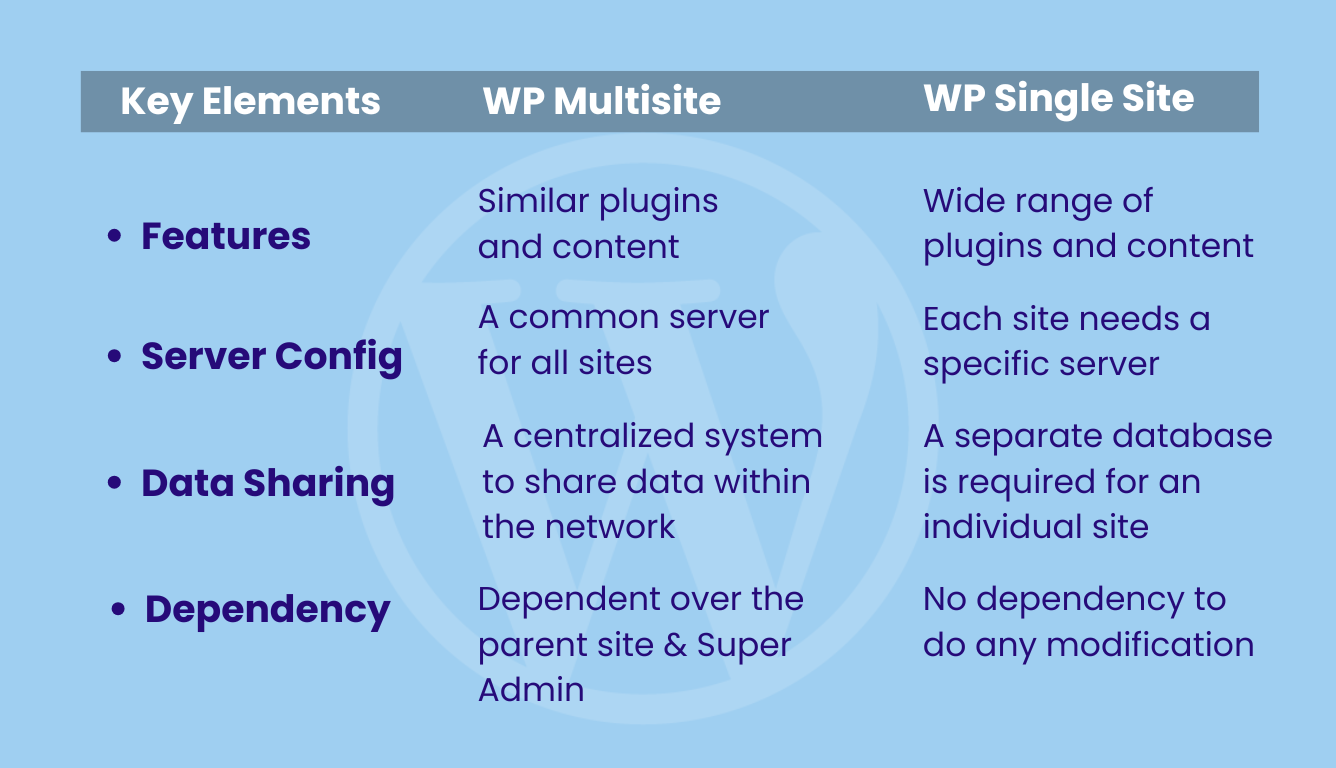









WordPress CMS is undoubtedly the best website development platform that offers various themes, plugins, eCommerce features, and API integrations according to your niche. Do you know that this open-source CMS enables you to add or manage multiple sites under a single dashboard? Yes, WordPress multisite helps you to create a network of various websites within your root WP installation.
The purpose of using the WordPress multisite function is to develop new websites or sub-directories in the same network. It removes the hassles of managing several installations and extends the functionalities of a single site. In this blog, we will find out how a WordPress multisite functions and the benefits of using it.
The WordPress multisite network facilitates users to configure multiple websites from one user account on your hosting server. For example, you run a large-scale law firm that uses the WordPress multisite network named ABC Blogs. Users can write blogs with the abc.edu email address under the specific domain, but the site’s owner (Super Admin) can make changes such as plugin installation, theme updates, and more.
You can share core files, databases and media files (images, videos, and content) with restricted access. All individual sites have separate directories to upload content. Hence, no one can get access to another site in the same network. Before getting into the benefits of implementing the WordPress multisite feature, let’s see how it works.


You need to understand when you should use a WordPress multisite over a default WordPress website. Even though both sites are based on WP, they have distinct features. WP multisite is effective for businesses or institutions that opt to share resources with multiple sites to save time and storage space. It provides a centralized management system that simplifies the process of updates, security checks, and maintenance. Here are a few essential aspects that show how a WP multisite works:
Similar to a single default WP site, WordPress multisite has the same user roles with one addition which is Administrator (Super Admin). After installing the WP multisite, you become the network administrator or super admin with the privileges to create multiple sites under your network. You get the full authority to modify themes, plugins, and additional site settings according to your needs.
You can also provide access to an individual to make a website on the same network with admin power over that particular website. The difference is that the network or super admin can make changes and add functional codes on all websites, but a site admin only activates new updates. A site admin has the authority to add new users with restricted access to that specific website not over other sites on the network. For instance, consider a CEO of an organization who segregates a team with managers to monitor the operations of a respective department. Hence, this hierarchy of user and admin roles removes the complications of the site’s management and functioning.
As said before, WordPress multisite has the same core files and database for all sites on that network. Here, the back end is the key differentiator that brings the changes. In multisite, every subsite uses a common core code and database within the same WP directory. This process saves the storage capacity of your server resources. It helps subsites or users to share files with other sites across their network. However, every subsite has separate database tables for posts, users, and media files. Once you activate a WP multisite, it creates 7 new database tables such as wp_blogs, wp_blog_versions, wp_registration_log, wp_signups, wp_site, wp_sitemeta, and wp_sitecategories (optional). Therefore, it makes the data safe and secure for individual sites without affecting the backend and database structure of other subsites.
Likewise, for media upload, WP multisite uses a directory path wp-content/upload named “sites“. Hence, whenever you or a user create an additional site on the network, WP multisite creates a new folder in the site directory equivalent to the site’s ID. For example, the site you make on the network generates an ID- 02. All media files will be stored in this subfolder (wp-content/uploads/sites02). It makes the site’s troubleshooting and data backup process easier.
A domain name is one of the key components that help you identify a WordPress multisite. Every subsite you add to your default WP installation comes up with the original domain ID or URL. So, there are two ways to add subsites in a multisite network:
Domain mapping helps you add a custom or unique domain to your WP multisite or subsite. The advantage of using domain mapping is that it makes your subsite like a new standalone website with a distinct URL that is not linked to the original site. The best example of a multisite network is WordPress.com itself. It hosts several sites with different themes, plugins, layouts, and site structures based on business operations.
You don’t need to install themes and plugins separately while configuring the WordPress multisite. That means all themes and plugins are available in the WP-content directory of the root WP website. One can activate or update themes or plugins from the shared directory in the same network without copying each site.
The super admin or network administrator has the authority to enable or disable plugins and themes across all sites under the network. Every subsite has its individual database that helps avoid plugin conflicts or other technical issues. Any customization you make to your subsite applies to that respective site, not the whole network.
With many other reasons, one primary consideration for implementing this incredible tool is to enhance the functionalities of a single website into a multisite feature. Here are a few advantages of using WordPress multisite:
WordPress multisite feature is the best solution to organize multiple websites using similar plugins, themes, and other features. Before installing this tool, you need to consider a few cons such as limited file sharing as multisite uses a sharable database, parent site dependency, and limited hosting support. If you are a web developer and your clients need unique websites with custom themes, plugins, and site settings then WP multisite may not fit all requirements. Hence, WP multisite feature is effective for managing a set of websites with similar functions and branding concerns. Here are some use cases of multisite to give an in-depth idea:
Therefore, through this comparison table, you can understand when to use WP multisite over a single website.


Whether creating a site for online communities, educational bodies, social networking forums, or business branding, WordPress multisite works appropriately to fulfil your needs. With one integration, you can remove the process of redundant work. It keeps the site structure and data intact with the freedom of sharing files across the network. We have highlighted all potential factors of a WP multisite network. If you need more information about the setup process, leave your comments below or contact us.
Website Development | Mobile App Development | Application Development
We will definitely get back in touch with you over mail within 12 Hours.
In-case you have not heard from us within 12 hours, kindly check your spam once.
I'm a software consultant. I've 7+ years of industry experience. I'd love to connect with you and brainstorm your custom software needs. It's my responsibility to find you the best solution.
ANAND GUPTA
Drop your details and we'll get in touch with you within 12 hours.
Reach us for
Talk to us